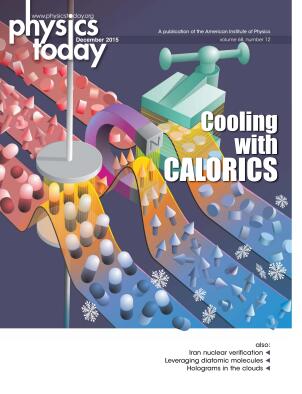A last word on quantum Darwinism
DOI: 10.1063/PT.3.3002
In the opening paragraphs of “Quantum Darwinism, classical reality, and the randomness of quantum jumps” (Physics Today, October 2014, page 44
Decoherence theory shows how interactions with environmental quanta (photons, air molecules, and so forth) convert a quantum system’s superposition state α|s1⟩ + β|s2⟩ into the entangled “measurement state” α|s1⟩|e1⟩ + β|s2⟩|e2⟩, where |e1⟩ and |e2⟩ are orthogonal many-body states of the environment. Thus the environment acts just like a “which-slit” detector in the double-slit experiment with photons. Such a which-slit measurement transforms each photon from its premeasurement superposition over both slits into a measured photon whose single-slit states |s1⟩ and |s2⟩ are entangled with the two orthogonal states |e1⟩ and |e2⟩ of the detector. That removes the interferences from—that is, it decoheres—the photon.
At that point, the theory runs into the problem of outcomes: The measurement state is still a superposition, albeit one in which the measured quantum no longer interferes with itself. By what logic does that imply definite (but indeterminate) individual outcomes? In other words, by what logic is Schrödinger’s cat converted into a cat that is either dead or alive rather than one that is both dead and alive? Zurek’s analysis does nothing to resolve that question.
References
1. S. L. Adler, Stud. Hist. Philos. Mod. Phys. 34, 135 (2003). https://doi.org/10.1016/S1355-2198(02)00086-2
2. M. Schlosshauer, Rev. Mod. Phys. 76, 1267 (2005). https://doi.org/10.1103/RevModPhys.76.1267
More about the Authors
Art Hobson. (ahobson@uark.edu) University of Arkansas, Fayetteville.
